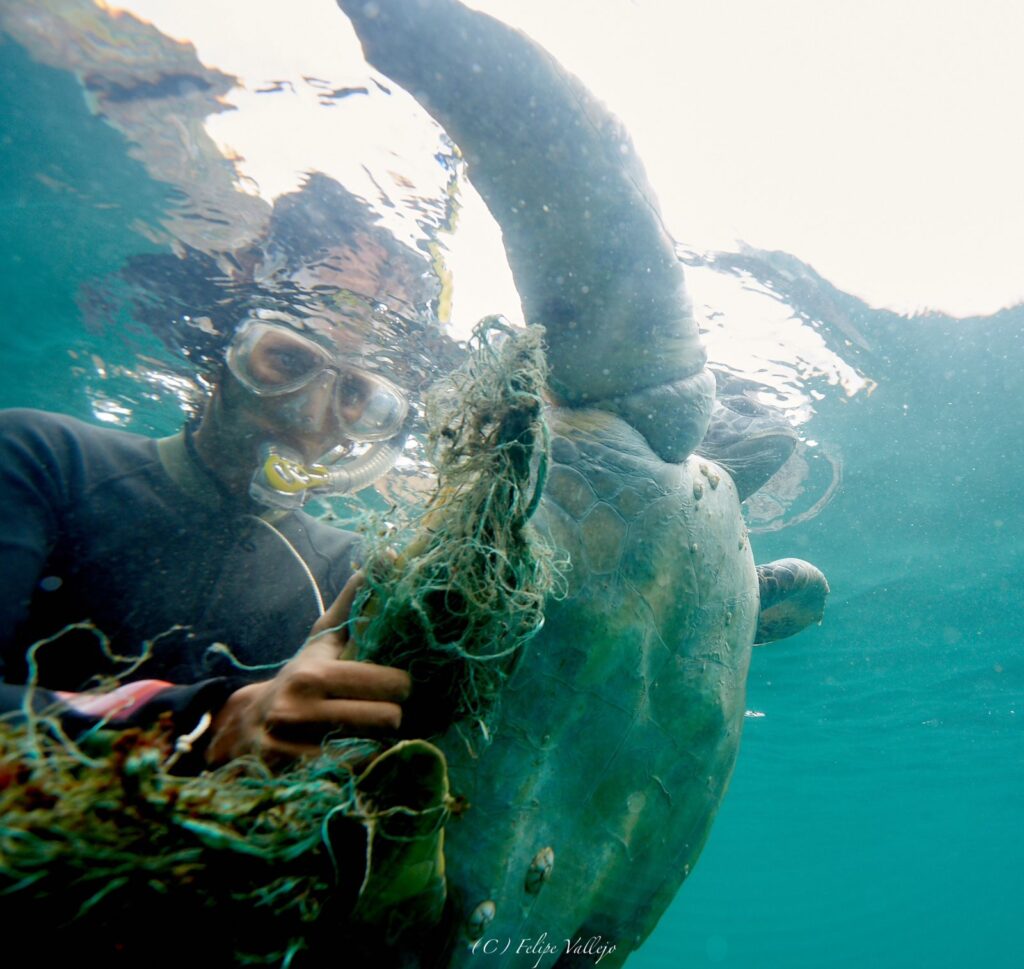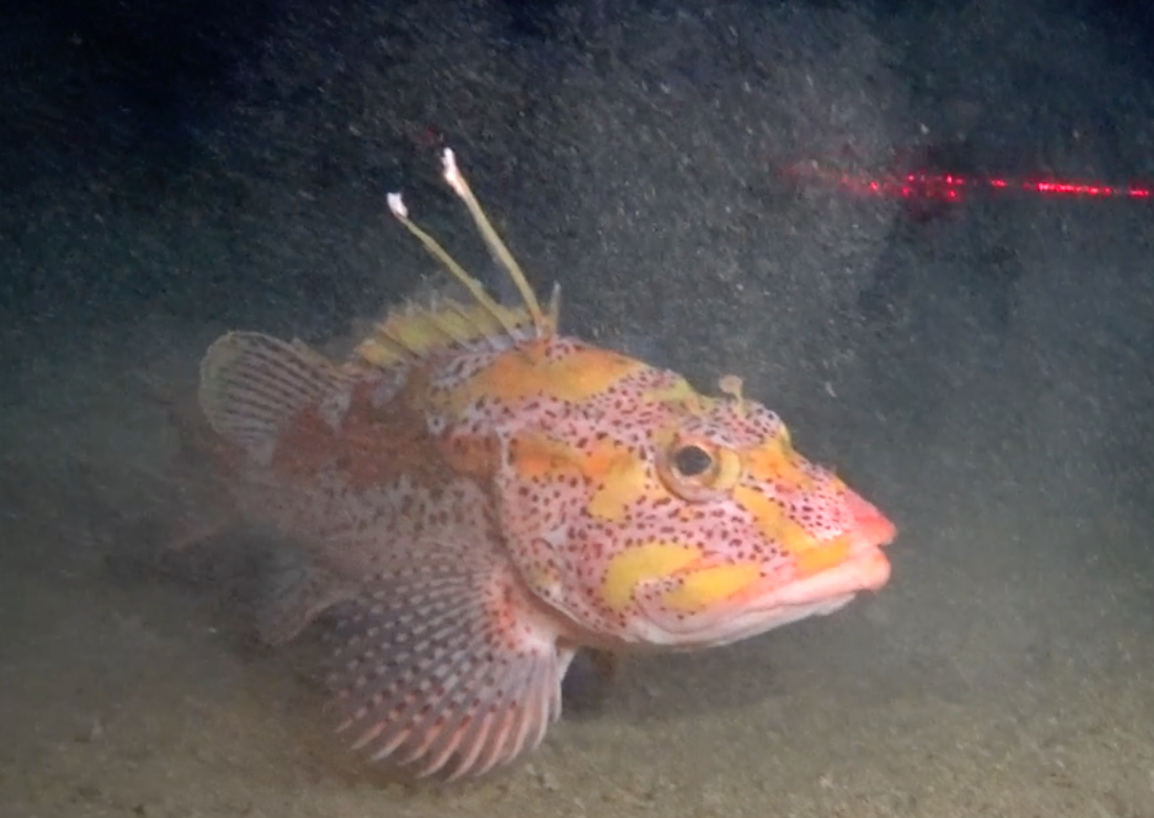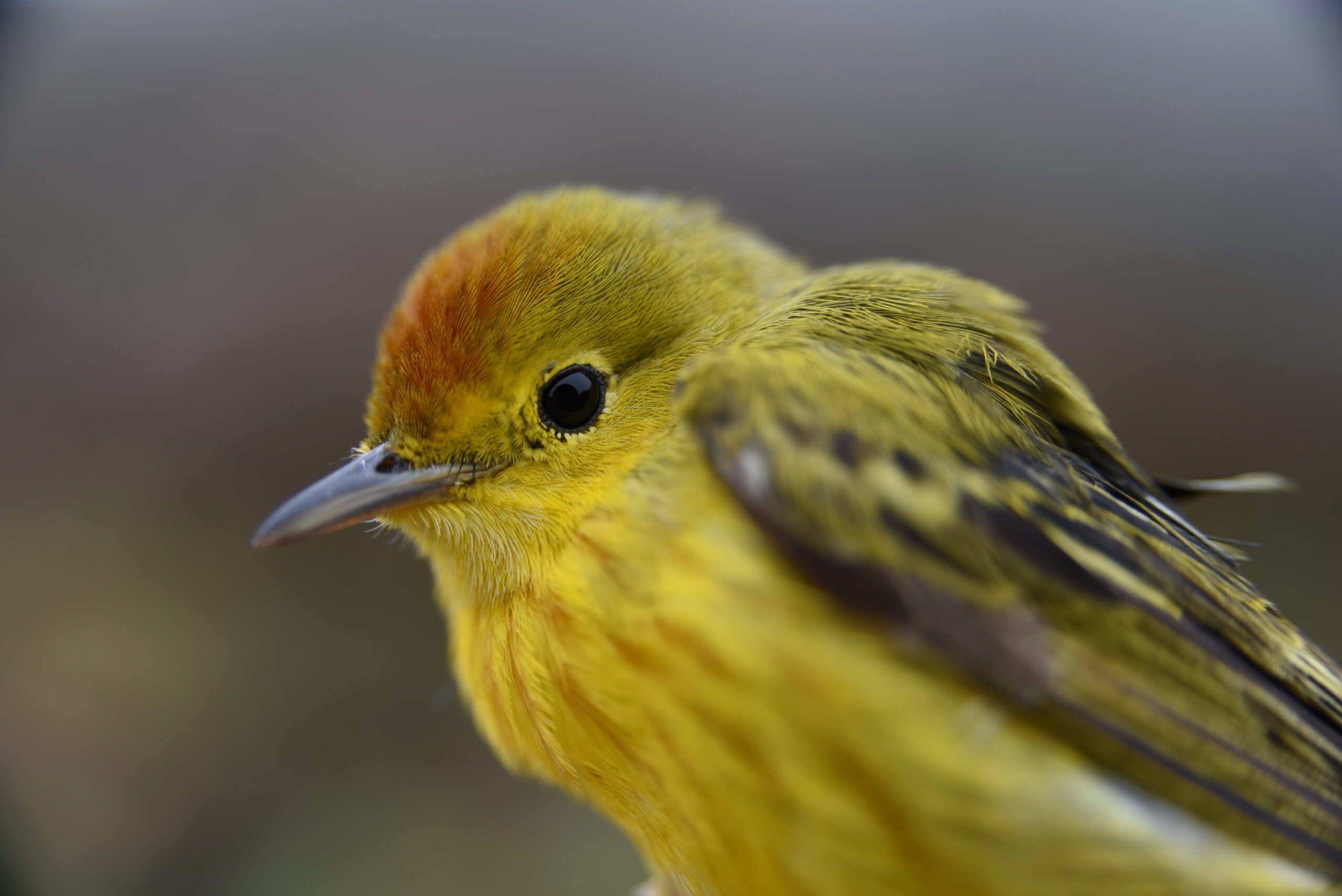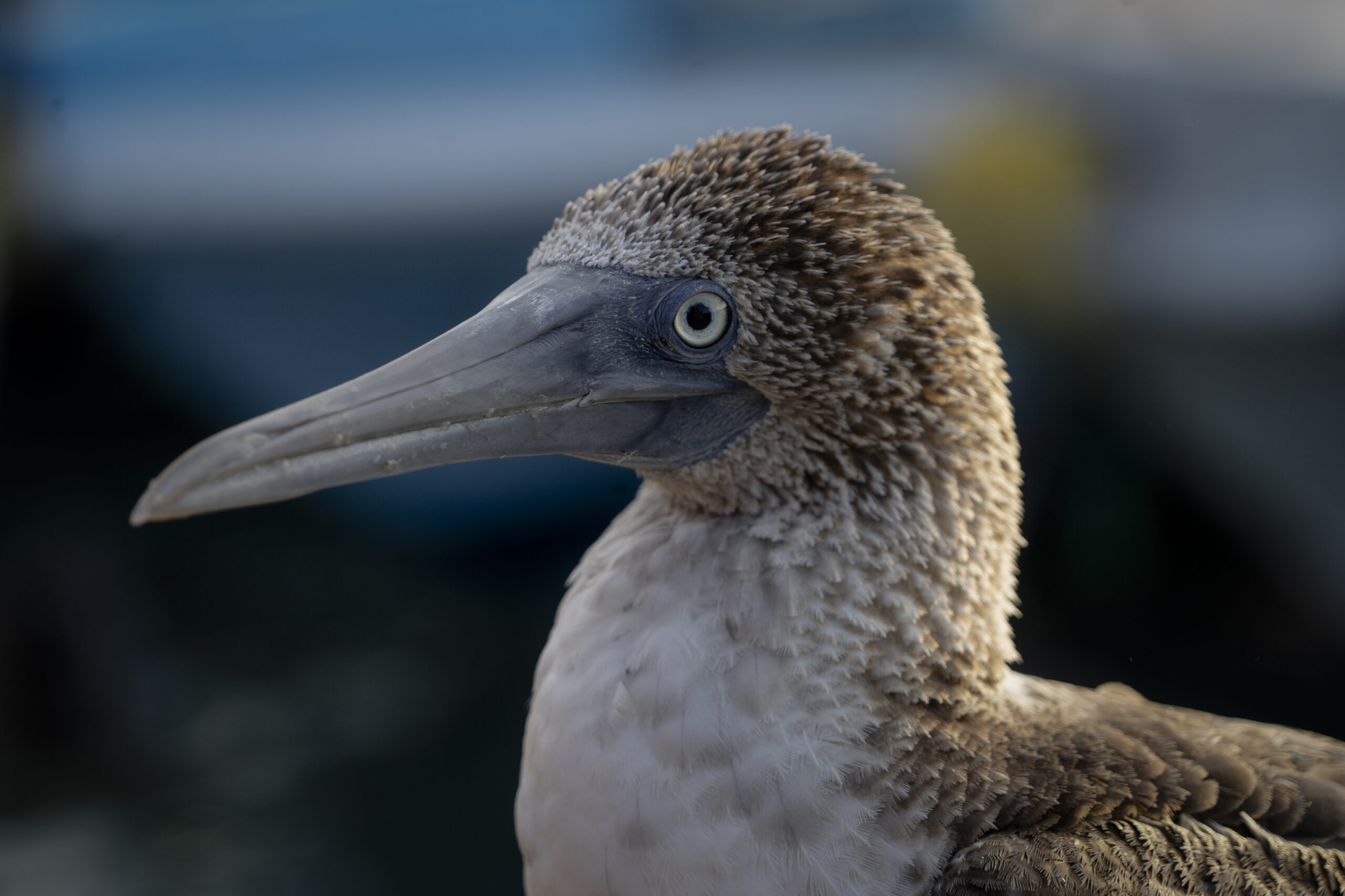Marine vertebrates, particularly green sea turtles, are especially vulnerable to plastic pollution through ingestion or entanglement. This study investigated wild juvenile green sea turtles (Chelonia mydas) from two Ecuadorian national parks (Galápagos and Machalilla) to assess the prevalence of plastic pollution in their feces and its potential impact on various health metrics. We analyzed fecal samples from 46 juvenile green sea turtles using Fourier transform infrared spectroscopy (FT-IR) to quantify microplastics (MPs). A complementary methodology using pressurized liquid extraction with double-shot pyrolysis-gas chromatography-mass spectrometry (Pyr-GC/MS) was also employed to quantify synthetic polymer mass concentrations. The results from these analyses were compared with blood analytes.
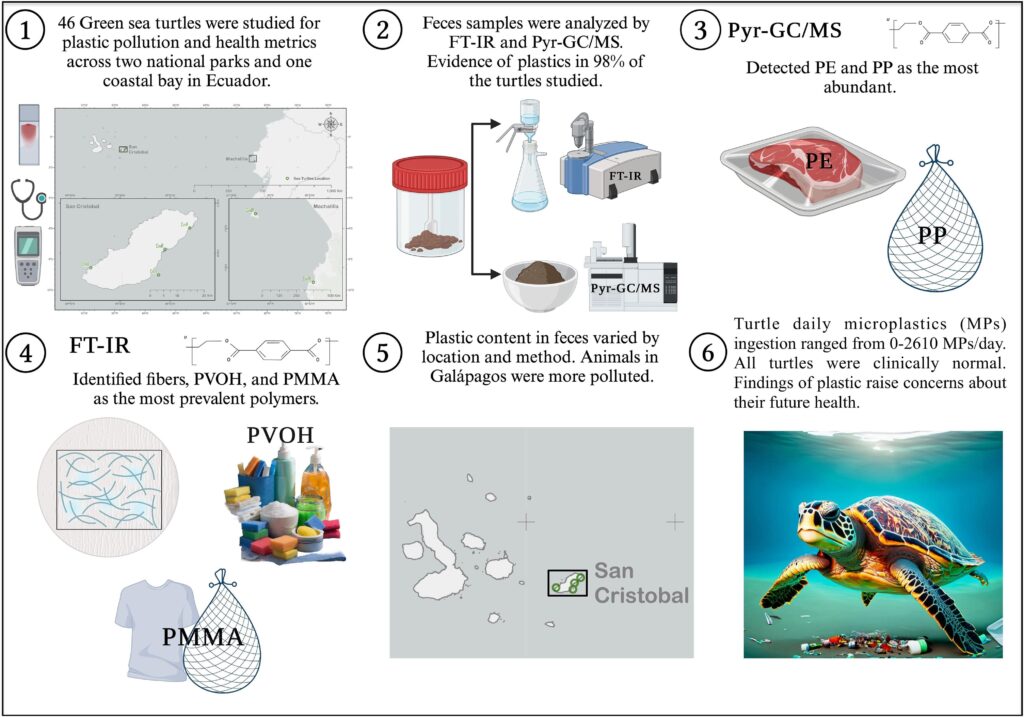
FT-IR analysis revealed a mean of 4.4±5.2 MPs/g in fecal samples, with the highest quantities found in the Galápagos Marine Reserve (GMR). The most common MPs shape identified were fibers (x̄ = 3.8±4.5 MPs/g), and the predominant synthetic polymers were polyvinyl alcohol (PVOH) and polyacrylates (PMMA). The daily intake of MPs by the sampled turtles ranged from a minimum of 312±409 MPs/day to a maximum of 430±563 MPs/day. Pyr-GC/MS analysis detected polyethylene (PE) with a mean of 367±1158 μg/g and polypropylene (PP) with a mean of 155±434 μg/g in fecal samples, with the highest pollution levels observed in the GMR.
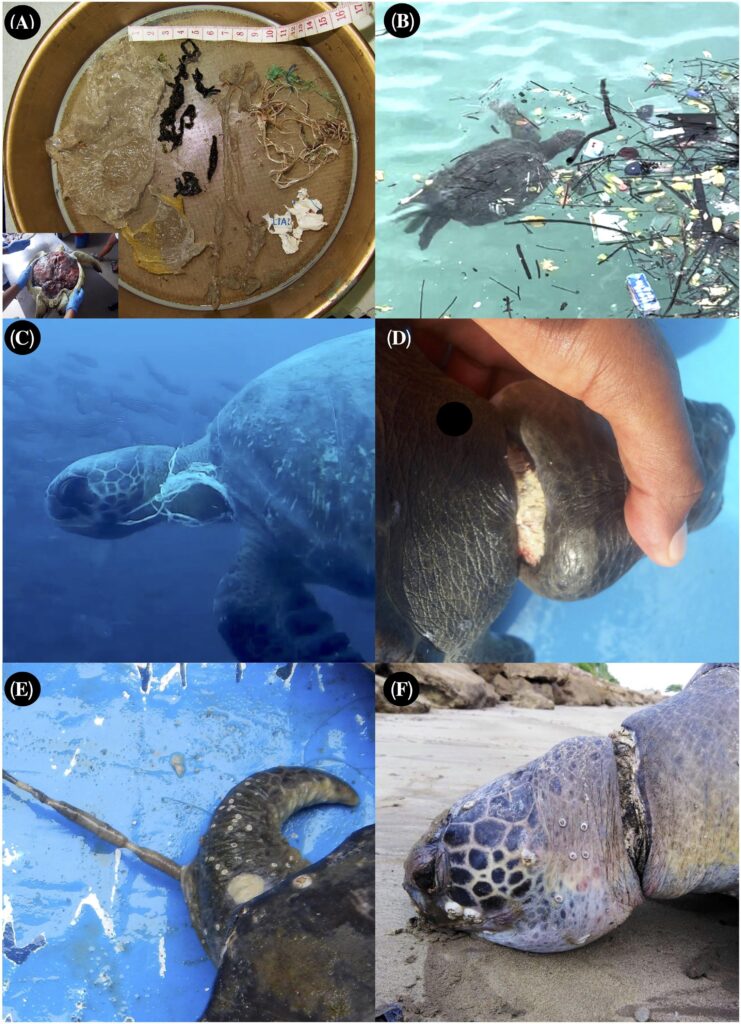
Both FT-IR and Pyr-GC/MS techniques detected plastic pollution in 98% of the sampled population. Although the methods produced slightly different results due to methodological variations, both supported the finding that turtles in the GMR were exposed to higher rates of plastic ingestion. Despite the turtles appearing clinically healthy based on blood analysis, significant differences in eleven health metrics were observed between turtles classified as less at risk and those most at risk for plastic pollution. Further research is necessary to understand the potential health implications of these findings.
Learn more about this investigation in the following link:

